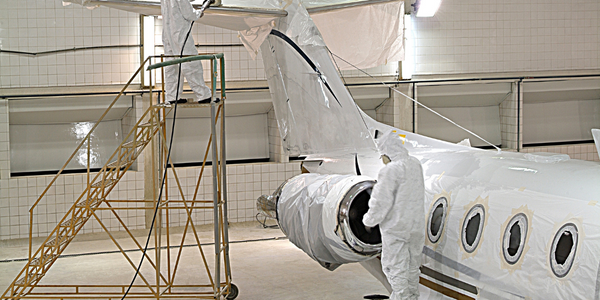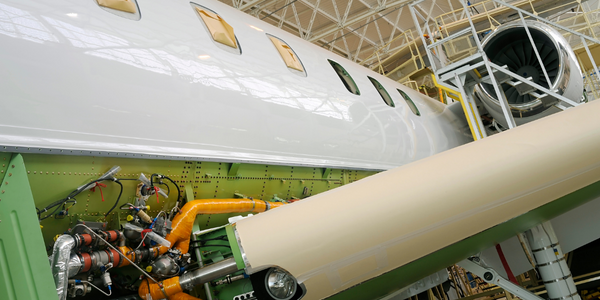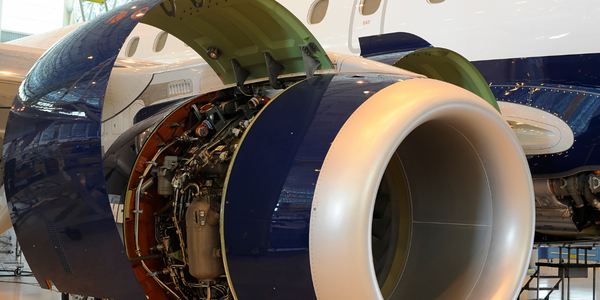Customer Company Size
Large Corporate
Region
- America
Country
- United States
Product
- JDA® Cargo Revenue Optimizer
Tech Stack
- Capacity Forecasting Technology
- Overbooking Algorithms
Implementation Scale
- Enterprise-wide Deployment
Impact Metrics
- Revenue Growth
- Productivity Improvements
Technology Category
- Analytics & Modeling - Predictive Analytics
- Functional Applications - Inventory Management Systems
Applicable Industries
- Aerospace
Applicable Functions
- Logistics & Transportation
Use Cases
- Predictive Replenishment
- Inventory Management
Services
- Software Design & Engineering Services
- System Integration
About The Customer
American Airlines Cargo is a division of American Airlines that manages more than 36 million ton miles of freight and mail weekly on approximately 180 wide-body and more than 3,200 narrow-body flights each day. The company provides cargo lift capacity to more than 240 cities in the United States, Europe, Canada, Mexico, the Caribbean, Latin America and Asia. It utilizes the cargo capacity of American Airlines’ passenger fleet to facilitate the shipping of many product types, including fresh flowers, fruit, vegetables, seafood and life-saving pharmaceuticals. Its freight customers include some of the largest shippers in the world.
The Challenge
American Airlines Cargo, a division of American Airlines, manages more than 36 million ton miles of freight and mail weekly on approximately 180 wide-body and more than 3,200 narrow-body flights each day. The company provides cargo lift capacity to more than 240 cities in the United States, Europe, Canada, Mexico, the Caribbean, Latin America and Asia. However, calculating available cargo capacity on a passenger flight is not as straightforward as it may seem. Not only are there obvious factors such as passenger and baggage forecasts, the amount of fuel on board and equipment weight to consider, but there are also external factors such as airport limits on takeoff and/or landing weights or ground-handling capabilities for tight airport connections that have to be taken into account. The most important factor that affects capacity forecasting accuracy is customer behavior. Bookings on passenger flights are often cancelled, amended or under/over tendered at the last minute. Therefore, forecasting customer tendering behavior is a critical factor that needs to be modeled, using overbooking algorithms to predict the optimal adjustments to capacity in order to minimize spoilage or offloads.
The Solution
American Airlines Cargo embarked upon a multi-year effort to streamline and simplify the way it does business. A significant part of this initiative was to revamp its revenue management business process and solution. The company selected JDA Cargo Revenue Optimizer (CRO) to replace its existing technology. The first phase of this initiative was to implement advanced capacity forecasting and overbooking capabilities. The JDA solution delivers a powerful capacity forecasting and overbooking capability, allowing cargo carriers to predict sellable capacity quickly and accurately in response to changing events throughout the booking window. Forecasts from the JDA solution were compared with those produced by the incumbent system. The model showed that JDA’s solution provided more significant improvement in revenue per year. Based on these results, American Airlines Cargo moved the system into production.
Operational Impact
Quantitative Benefit

Case Study missing?
Start adding your own!
Register with your work email and create a new case study profile for your business.
Related Case Studies.

Case Study
Airbus Soars with Wearable Technology
Building an Airbus aircraft involves complex manufacturing processes consisting of thousands of moving parts. Speed and accuracy are critical to business and competitive advantage. Improvements in both would have high impact on Airbus’ bottom line. Airbus wanted to help operators reduce the complexity of assembling cabin seats and decrease the time required to complete this task.

Case Study
Aircraft Predictive Maintenance and Workflow Optimization
First, aircraft manufacturer have trouble monitoring the health of aircraft systems with health prognostics and deliver predictive maintenance insights. Second, aircraft manufacturer wants a solution that can provide an in-context advisory and align job assignments to match technician experience and expertise.

Case Study
Aerospace & Defense Case Study Airbus
For the development of its new wide-body aircraft, Airbus needed to ensure quality and consistency across all internal and external stakeholders. Airbus had many challenges including a very aggressive development schedule and the need to ramp up production quickly to satisfy their delivery commitments. The lack of communication extended design time and introduced errors that drove up costs.

Case Study
Accelerate Production for Spirit AeroSystems
The manufacture and assembly of massive fuselage assemblies and other large structures generates a river of data. In fact, the bill of materials for a single fuselage alone can be millions of rows of data. In-house production processes and testing, as well as other manufacturers and customers created data flows that overwhelmed previous processes and information systems. Spirit’s customer base had grown substantially since their 2005 divestiture from Boeing, resulting in a $41 billion backlog of orders to fill. To address this backlog, meet increased customer demands and minimize additional capital investment, the company needed a way to improve throughput in the existing operational footprint. Spirit had a requirement from customers to increase fuselage production by 30%. To accomplish this goal, Spirit needed real-time information on its value chain and workflow. However, the two terabytes of data being pulled from their SAP ECC was unmanageable and overloaded their business warehouse. It had become time-consuming and difficult to pull aggregate data, disaggregate it for the needed information and then reassemble to create a report. During the 6-8 hours it took to build a report, another work shift (they run three per day) would have already taken place, thus the report content was out-of-date before it was ever delivered. As a result, supervisors often had to rely on manual efforts to provide charts, reports and analysis.

Case Study
Developing Smart Tools for the Airbus Factory
Manufacturing and assembly of aircraft, which involves tens of thousands of steps that must be followed by the operators, and a single mistake in the process could cost hundreds of thousands of dollars to fix, makes the room for error very small.








